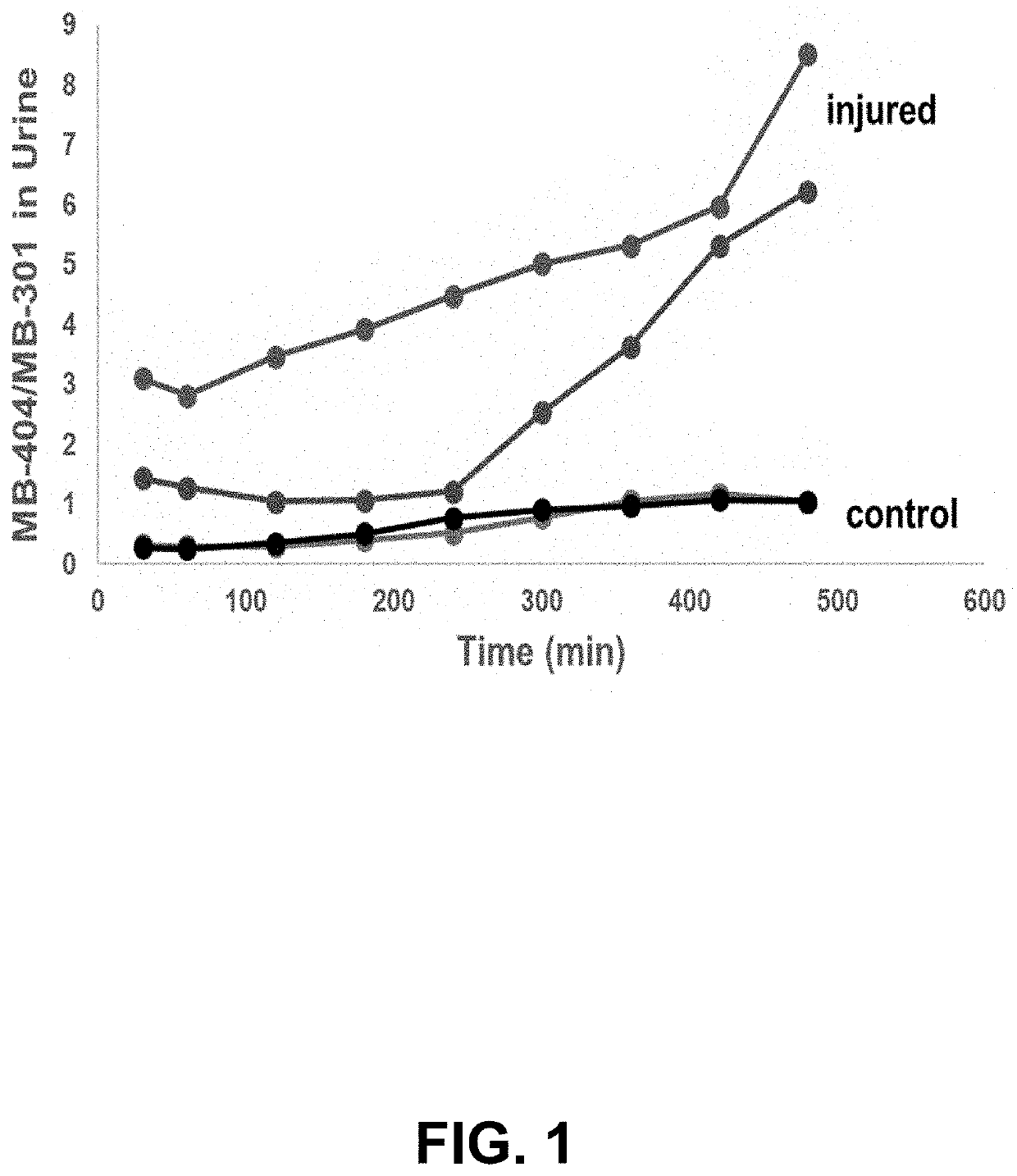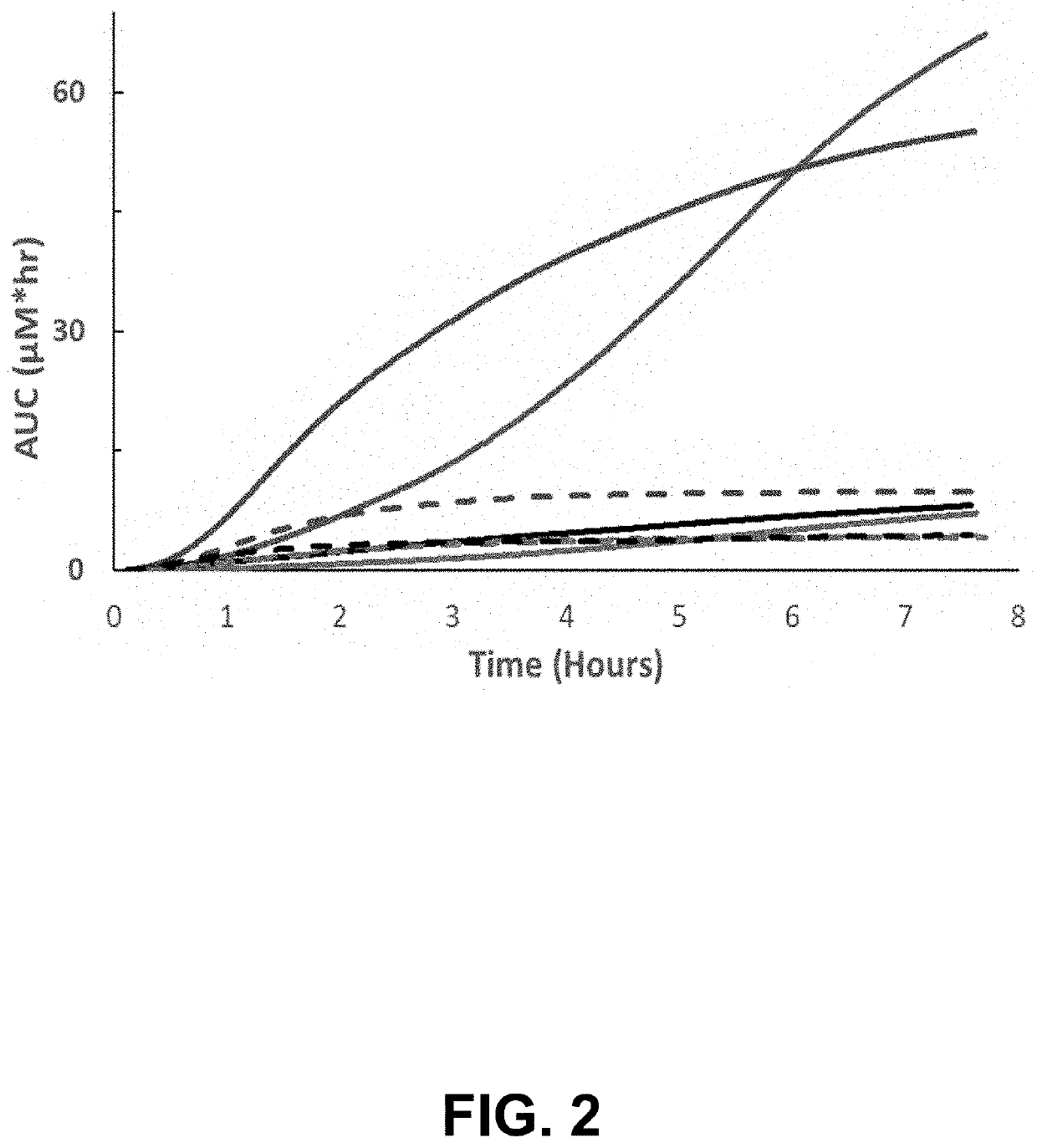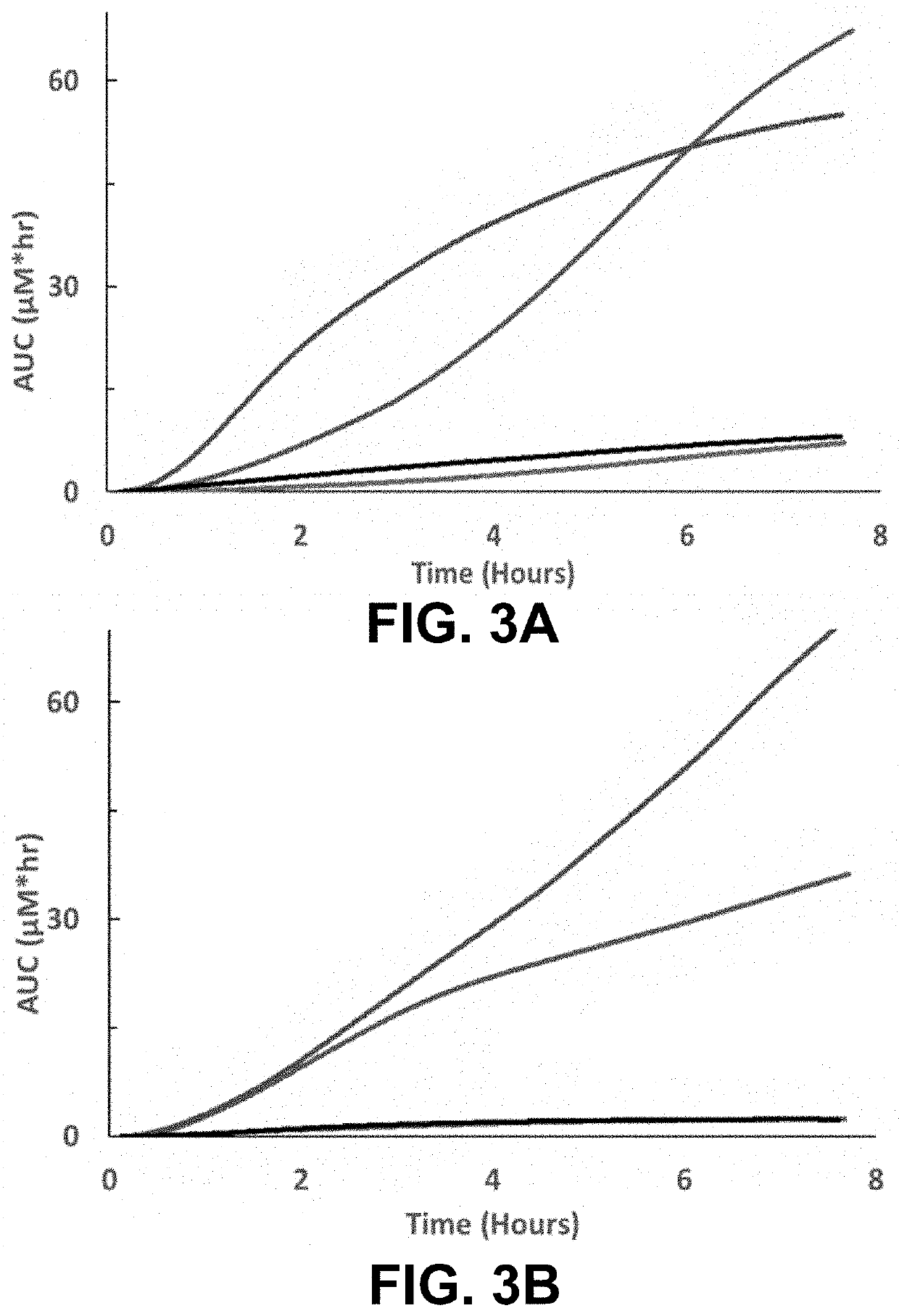Methods of monitoring mucosal healing
a mucosal and mucosal technology, applied in the field of mucosal monitoring, can solve the problems of intestinal perforation and hemorrhage, affecting the integrity of the barrier, and the cost of endoscopic monitoring, so as to achieve the effect of less absorbed and greater barrier integrity
- Summary
- Abstract
- Description
- Claims
- Application Information
AI Technical Summary
Benefits of technology
Problems solved by technology
Method used
Image
Examples
example 1
tio of Fluorophores Recovered in Urine of Rats with Small Bowel Injury
[0056]DSAT was mimicked using two fluorophores with similar molecular weights to mannitol and lactulose, MB-301 and MB-404 (see Table 2). Like lactulose, MB-404 is too large to be absorbed by a healthy gut, but can traverse intercellular spaces in a diseased gut exhibiting increased permeability.
TABLE 2Fluorescent Tracer AgentsTracer AgentFluorescent tracer agentsNameMB-301MB-102MB-404USANrelmapirazinMolecular198372492Weight (Da)Light405 / 540445 / 560500 / 620absorption / emissionspectra (nm)StructureScientific3,6-diamino-2,5-3,6-diamino-2,5-bis{N-[(1R)-1-N2,N5-bis(2,3-dihydroxypropyl)-namepyrazine-carboxy-2-3,6-bis[(S)-2,3-dicarboxylic acidhydroxyethyl]carbamoyl}pyrazinedihydroxypropylamino]pyrazine-2,5-dicarboxamide
[0057]Furthermore, like both sugars used in the DSAT, MB-301 and MB-404 are not metabolized and are excreted by glomerular filtration, with neither (or negligible) tubular secretion nor reabsorption. To test...
example 2
al Detection of High Molecular Weight Fluorophore in Rat Model of Bowel Injury
[0059]To probe the ability to assess gut function in a specimen-free and real-time manner, a dual-wavelength transdermal fluorescence detection system was utilized to monitor MB-301 and MB-404 in the rat model of bowel injury. As the excitation and emission spectra of these fluorophores do not overlap, their presence can be assayed simultaneously. Following anaesthetization, the fluorescence detection system was affixed with medical adhesive to a depilated area on the back of each rat. Transdermal fluorescence monitoring was then initiated to detect baseline fluorescence prior to delivery of MB-301 and MB-404 by oral gavage, and was monitored continuously. The concentration of MB-301 as determined by transdermal fluorescence measurements remained low in both injured and control animals (FIG. 2, dashed lines) as this fluorophore is comparatively rapidly absorbed by the small intestine and subsequently clear...
example 3
ation of Intestinal Permeability in Human Crohn's Disease
[0062]A single center, randomized, open label, crossover study was performed to evaluate a solution containing 18.6 mg / mL of a pyrazine derived fluorophore (MB-102) at 1.5 or 3.0 mg / kg versus DSAT (L, 1000 mg and R, 200 mg) administered enterally. The composition of MB-102 solution for use in this study is provided in Table 3.
TABLE 3Composition of MB-102 solution for oral ingestionQuantity per mL ofComponentFunctionFormulationMB-102Active Ingredient18.824mgSodium dihydrogen phosphateDiluent / Buffer2mgmonohydrate, BP, USPSodium chloride, Ph. EurDiluent / Buffer4.62mgWater for injection, Ph. EurDiluent / BufferTo 1014 mg1N Sodium hydroxideDiluent / BufferpH adjusted to7.0-7.4
[0063]To compare the dynamic ranges of the fluorophore and DSAT clearances, healthy adults and adults with evidence of small bowel Crohn's disease on magnetic resonance enterography were enrolled. Participants were randomized to receive either the fluorophore trace...
PUM
| Property | Measurement | Unit |
|---|---|---|
| emission wavelengths | aaaaa | aaaaa |
| molecular weight | aaaaa | aaaaa |
| molecular weight | aaaaa | aaaaa |
Abstract
Description
Claims
Application Information
 Login to View More
Login to View More - R&D
- Intellectual Property
- Life Sciences
- Materials
- Tech Scout
- Unparalleled Data Quality
- Higher Quality Content
- 60% Fewer Hallucinations
Browse by: Latest US Patents, China's latest patents, Technical Efficacy Thesaurus, Application Domain, Technology Topic, Popular Technical Reports.
© 2025 PatSnap. All rights reserved.Legal|Privacy policy|Modern Slavery Act Transparency Statement|Sitemap|About US| Contact US: help@patsnap.com



